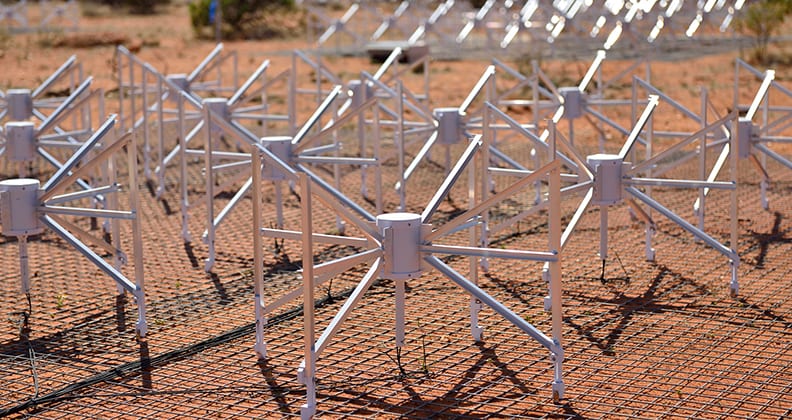Curtin University Adjunct Professor Ron Ekers has been awarded the international 2014 Grote Reber Medal for his achievements in radio astronomy, including his advocacy for the International Square Kilometre Array (SKA) and his early recognition that Australia would be an ideal site.

Professor Ekers was recognised for making precise measurements of the deflection of radio waves by the gravitational field of the Sun, and providing the first high-resolution images of the radio emission from the centre of the Galaxy.
He was also the first researcher to observe pulsars at high frequency and high time resolution and this led to the first determination of the Galactic magnetic field.
Professor Ekers said he was honoured to have his research efforts recognised with the Grote Reber Medal.
“Grote Reber was the world’s first radio astronomer and was well known for his innovative and sometimes idiosyncratic contributions to radio astronomy and to other fields of science,” Professor Ekers said.
“Radio astronomy is still a fascinating area of research and discovery, especially if you live in WA – which will become the home of part of the SKA, an innovative telescope continuing our Grote Reber inheritance into the future.
“Being involved with the Curtin-led Murchison Widefield Array (MWA), a $50 million precursor to the SKA located in the Murchison desert of Western Australia, has been fantastic and I look forward to being part of the cutting-edge research results to come.”
Professor Ekers has aided in the development of radio imaging techniques to exploit the MWA’s large field of view and has been involved in the discovery of an extremely rare type of galaxy using early science images from the telescope.
[youtube]https://www.youtube.com/watch?v=t3QoMazg94M[/youtube]
Professor Ekers was also recognised for his contribution to major radio astronomy instruments in Europe, the US and Australia.
He was director of the Very Large Array (VLA), the major national radio telescope in the USA, from 1980 until 1987 and was Foundation Director of CSIRO’s Australia Telescope National Facility between 1988 and 2003. He is a past President of the International Astronomical Union (IAU).
Since 2005, the Grote Reber Medal has been awarded to individuals of any nationality or country of residence for outstanding and innovative contributions to Radio Astronomy.
The 2014 Grote Reber Medal will be presented to Professor Ekers during the 31st General Assembly of the International Union of Radio Science (URSI) to be held in Beijing in August. The Reber Medal was established by the Trustees of the Grote Reber Foundation to honour the achievements of Grote Reber and is administered by the Queen Victoria Museum in Launceston, Tasmania.
Professor Ekers is a CSIRO Fellow and Adjunct Professor at both Curtin and the Raman Research Institute in Bangalore, India.



